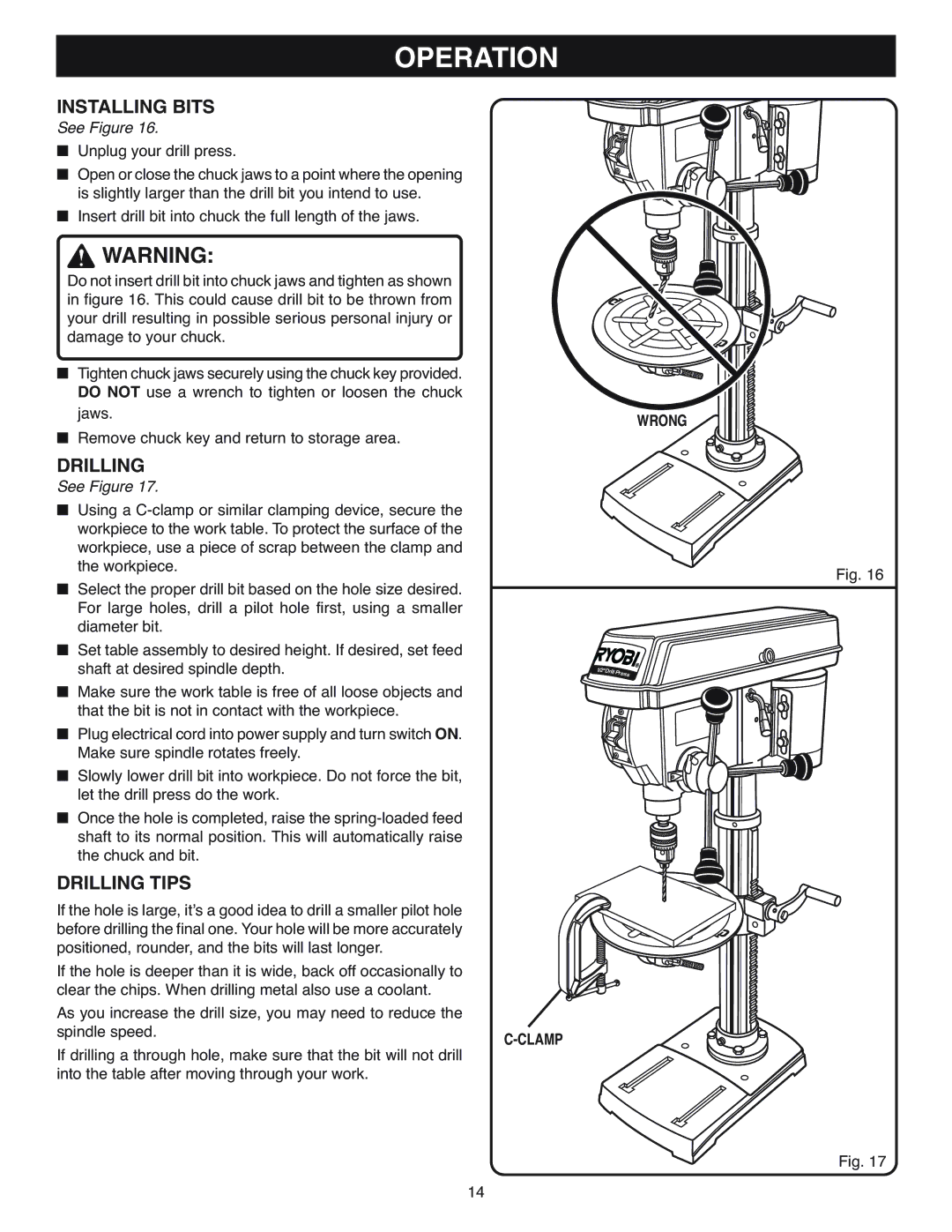
OPERATION
INSTALLING BITS
See Figure 16.
ON
■Unplug your drill press.
■Open or close the chuck jaws to a point where the opening is slightly larger than the drill bit you intend to use.
■Insert drill bit into chuck the full length of the jaws.
![]() WARNING:
WARNING:
Do not insert drill bit into chuck jaws and tighten as shown in figure 16. This could cause drill bit to be thrown from your drill resulting in possible serious personal injury or damage to your chuck.
■Tighten chuck jaws securely using the chuck key provided. DO NOT use a wrench to tighten or loosen the chuck jaws.
■Remove chuck key and return to storage area.
DRILLING
See Figure 17.
■Using a
■Select the proper drill bit based on the hole size desired. For large holes, drill a pilot hole first, using a smaller diameter bit.
■Set table assembly to desired height. If desired, set feed shaft at desired spindle depth.
■Make sure the work table is free of all loose objects and that the bit is not in contact with the workpiece.
■Plug electrical cord into power supply and turn switch ON. Make sure spindle rotates freely.
■Slowly lower drill bit into workpiece. Do not force the bit, let the drill press do the work.
■Once the hole is completed, raise the
WRONG
Fig. 16
1 | 2 | Drill Pr |
|
| ess |
|
| ON |
DRILLING TIPS
If the hole is large, it’s a good idea to drill a smaller pilot hole before drilling the final one. Your hole will be more accurately positioned, rounder, and the bits will last longer.
If the hole is deeper than it is wide, back off occasionally to clear the chips. When drilling metal also use a coolant.
As you increase the drill size, you may need to reduce the spindle speed.
If drilling a through hole, make sure that the bit will not drill into the table after moving through your work.
Fig. 17
14
